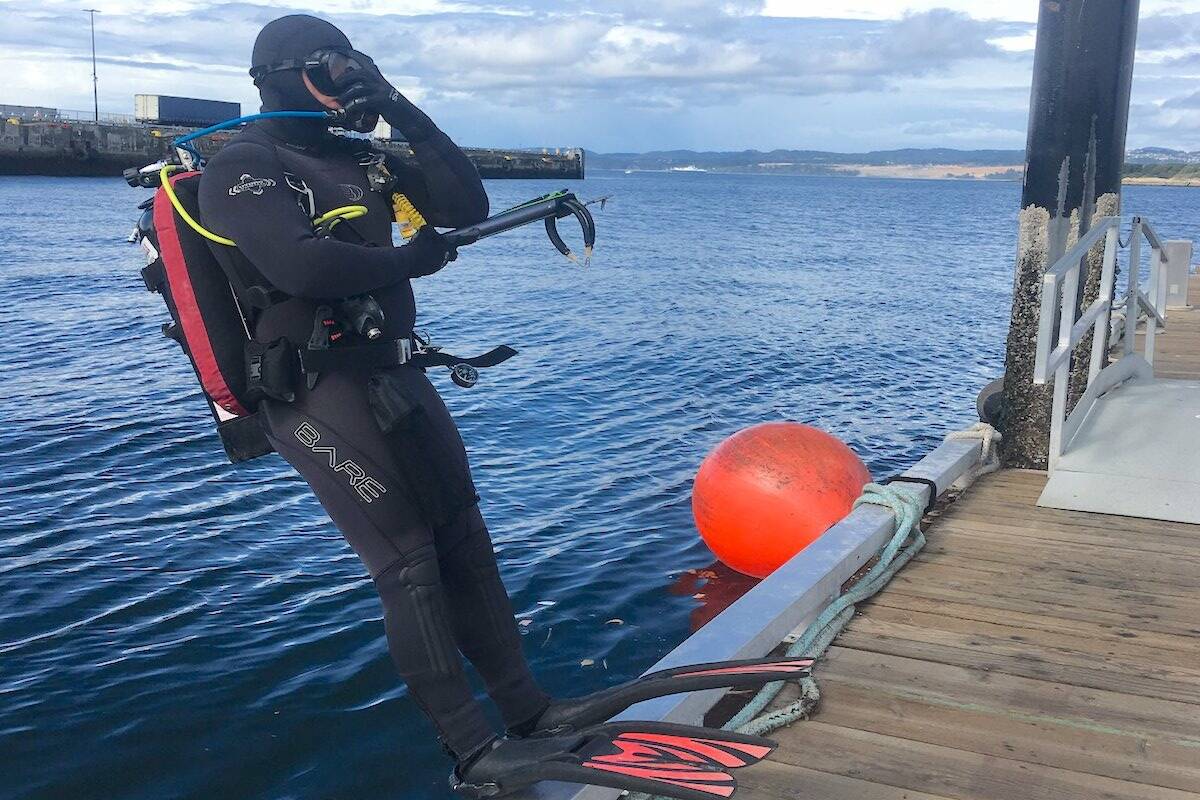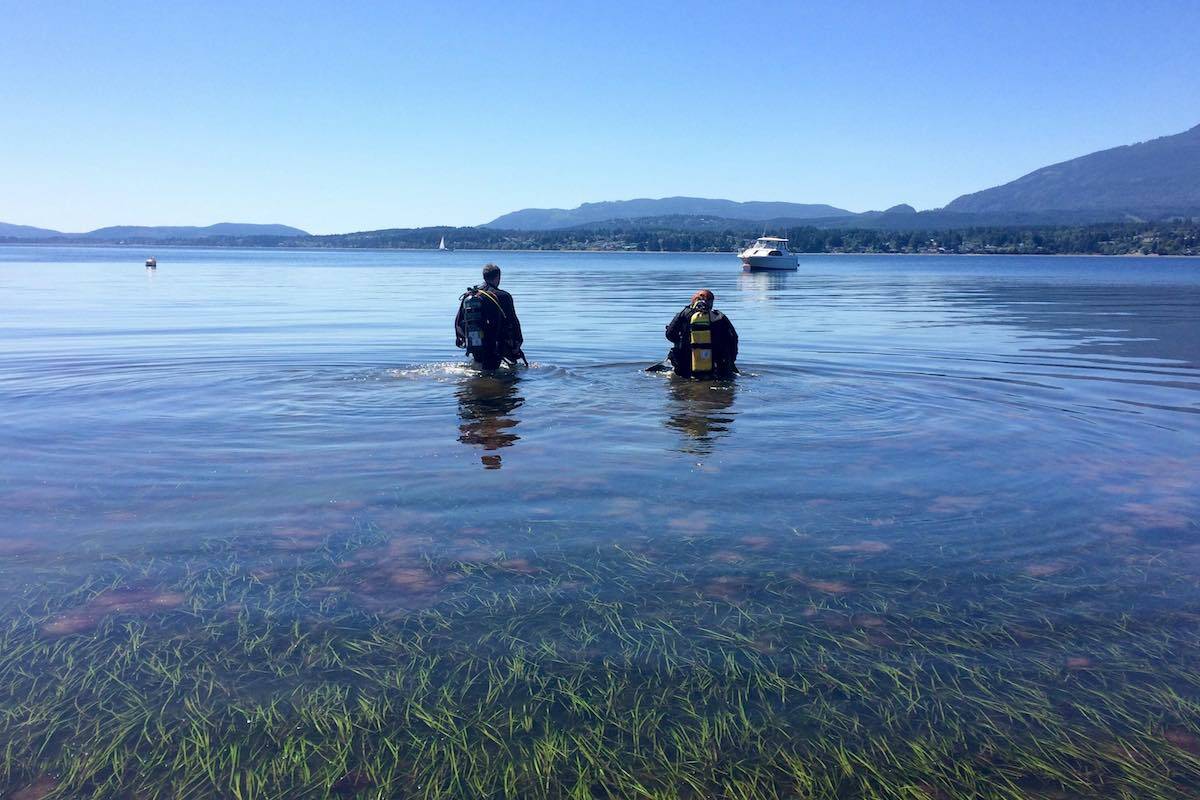Armed with a small speargun during a dive in the Victoria harbour’s murky waters, Kieran Cox collects fish differing in species and size.
The capital city plunge was one of three Vancouver Island locations where Cox and his fellow researchers gathered specimens from different stages of the coastal food web – from plankton to sea cucumbers and larger fish.
The researchers over the last couple of years were trying to uncover another mystery in the emerging study of how microplastic ingestion affects both animals and people.
Their study of Victoria harbour, Coles Bay and Ladysmith’s Elliot Beach found that while a large array of marine life ingest microplastics, the pollutants are not biomagnifying (increasing in chemical concentration as you move up the chain) in marine food webs in the same way substances such as mercury do.
Cox uses mercury as an example because its biomagnification has led to medical recommendations for certain groups, such as pregnant people, to avoid species like tuna or swordfish. The unknowns of plastic’s impact, however, is why the work was supported by a Fisheries and Oceans Canada grant for studying contaminants.
“I think this study is really going to contribute to our understanding of what kind of pollutant plastic is, (and) how it’s going to move through food webs,” said Cox, who got his PhD at the University of Victoria.
Plastics being commonplace in stomachs across whole marine food webs could have more widespread implications, Cox said, compared to mercury, where you can just cut out a few problematic species. He gives a caveat, that microplastics knowledge is a rapidly evolving field with a lot of unknowns about their impact. Future looks at food web biomagnification will also need to go beyond the gut and measure nanoplastics in marine life’s tissue and organs.
Cox said it will still take a lot more work to understand if plastics and the chemicals they carry have physiological or behavioural impacts on people and animals. He hopes to see a wide range of experts, including toxicologists and physiologists, collaborate with work like his team’s to chip away at that big question.
For now though, people worried about the amount of plastic they’re consuming should be more focused on how often they drink from a plastic water bottle over what seafood they eat, Cox said.
Another study he was involved in found microplastic intake increases 22-fold for regular bottled water drinkers compared to those getting water from the tap.
The postdoctorate fellow said it may be easy to scoff at people who say they don’t drink bottled water, but small changes away from single-use plastics really do add up.
“These things cumulated over a year have implications for your personal exposure and these things cumulated over the population have implications for how much plastic we are producing.”
While microplastic knowledge keeps expanding, the data continues to push a consistent solution.
“If we want to solve this problem, the route forward is to reduce our over-reliance on plastic, start having conversations about why it’s entering the ocean and how we mitigate that,” Cox said. “The most effective way to get plastic out of food webs is to not put plastic in food webs.”
READ: Humans unknowingly eat 100,000 particles of plastic per year, says new UVic study
READ: B.C. watches as California subpoenas plastic industry over waste, alleged deception
jake.romphf@blackpress.ca. Follow us on Instagram.
Like us on Facebook and follow us on Twitter.
Plastic wastevancouverislandWest Shore


